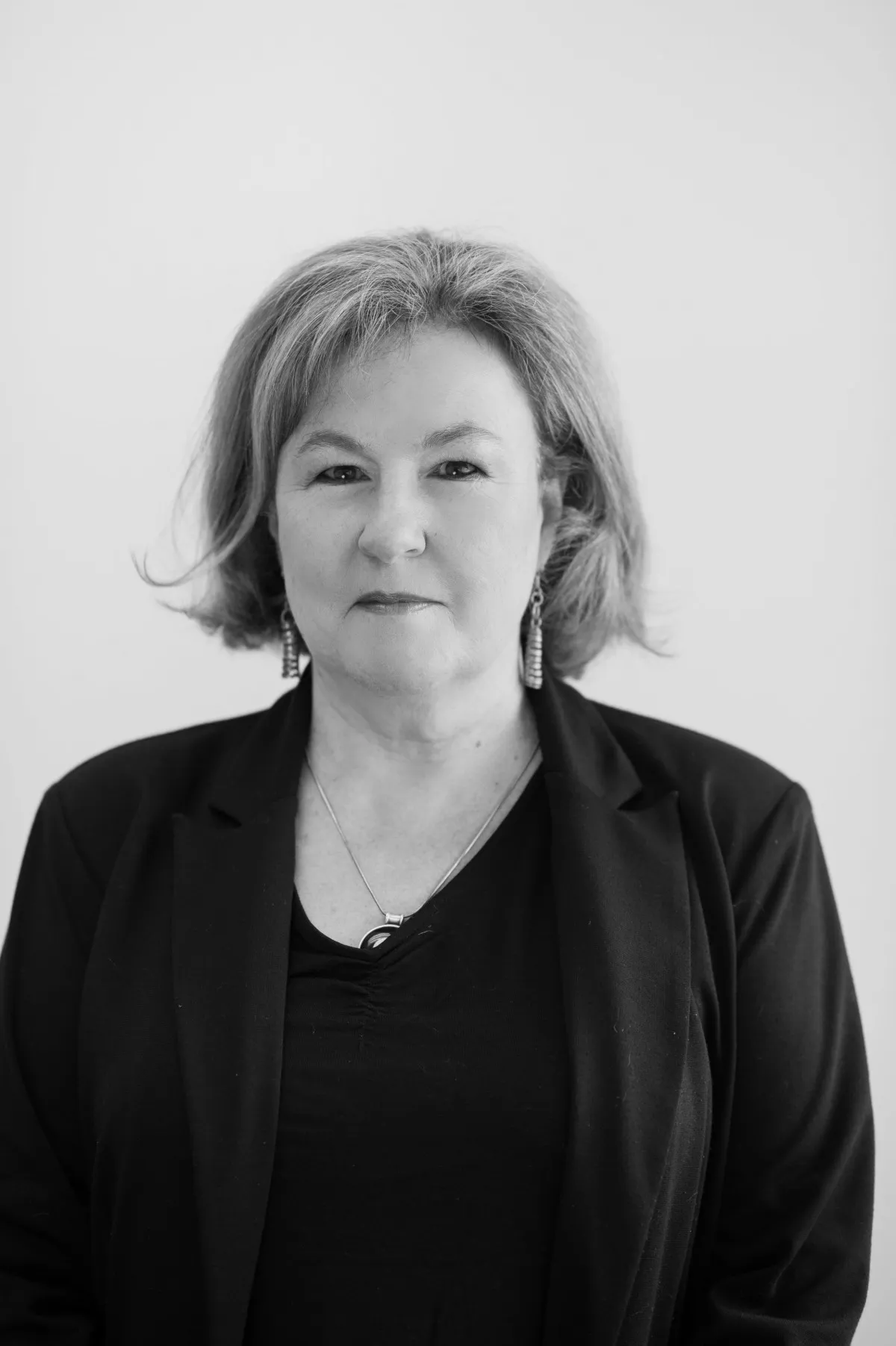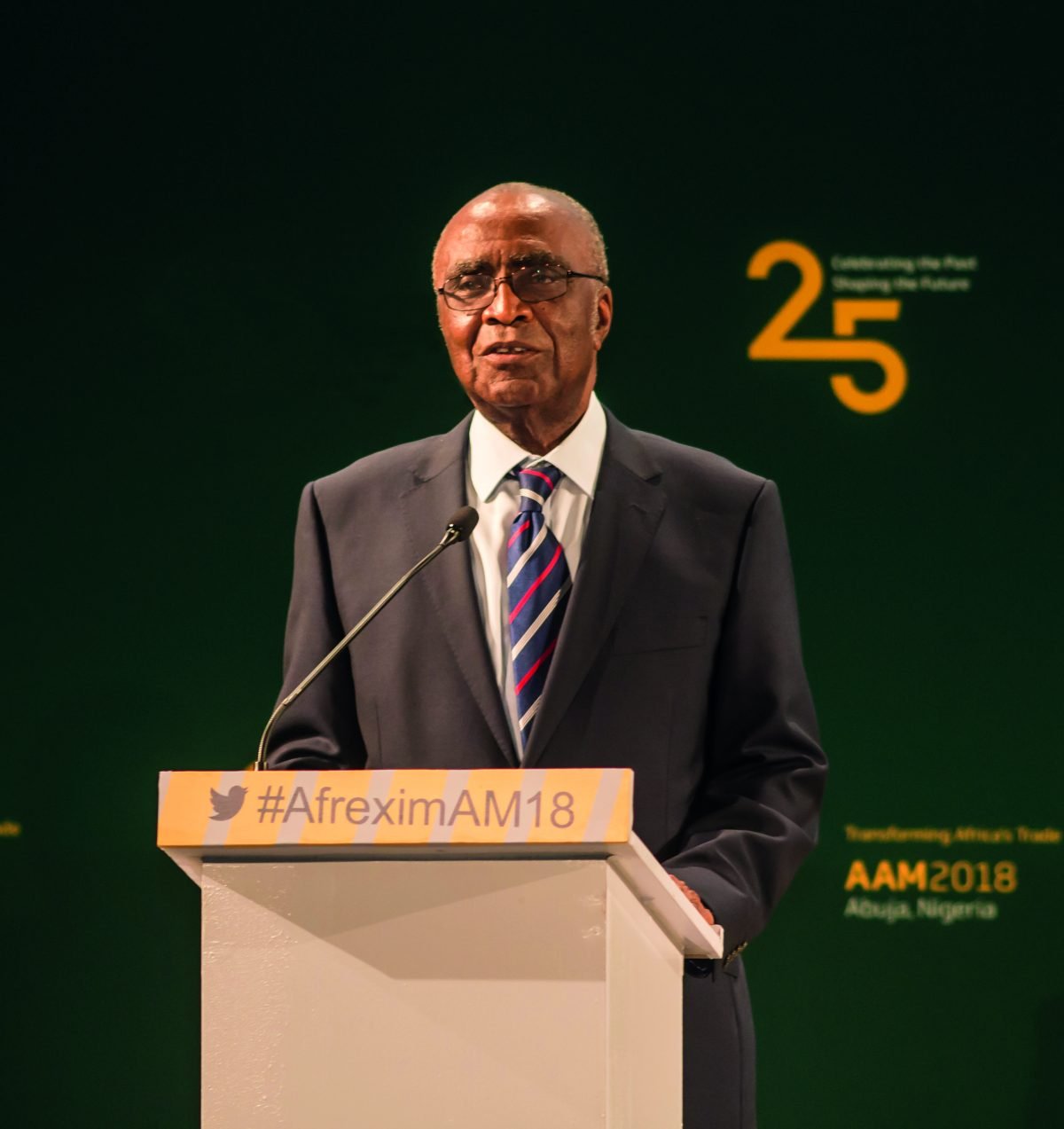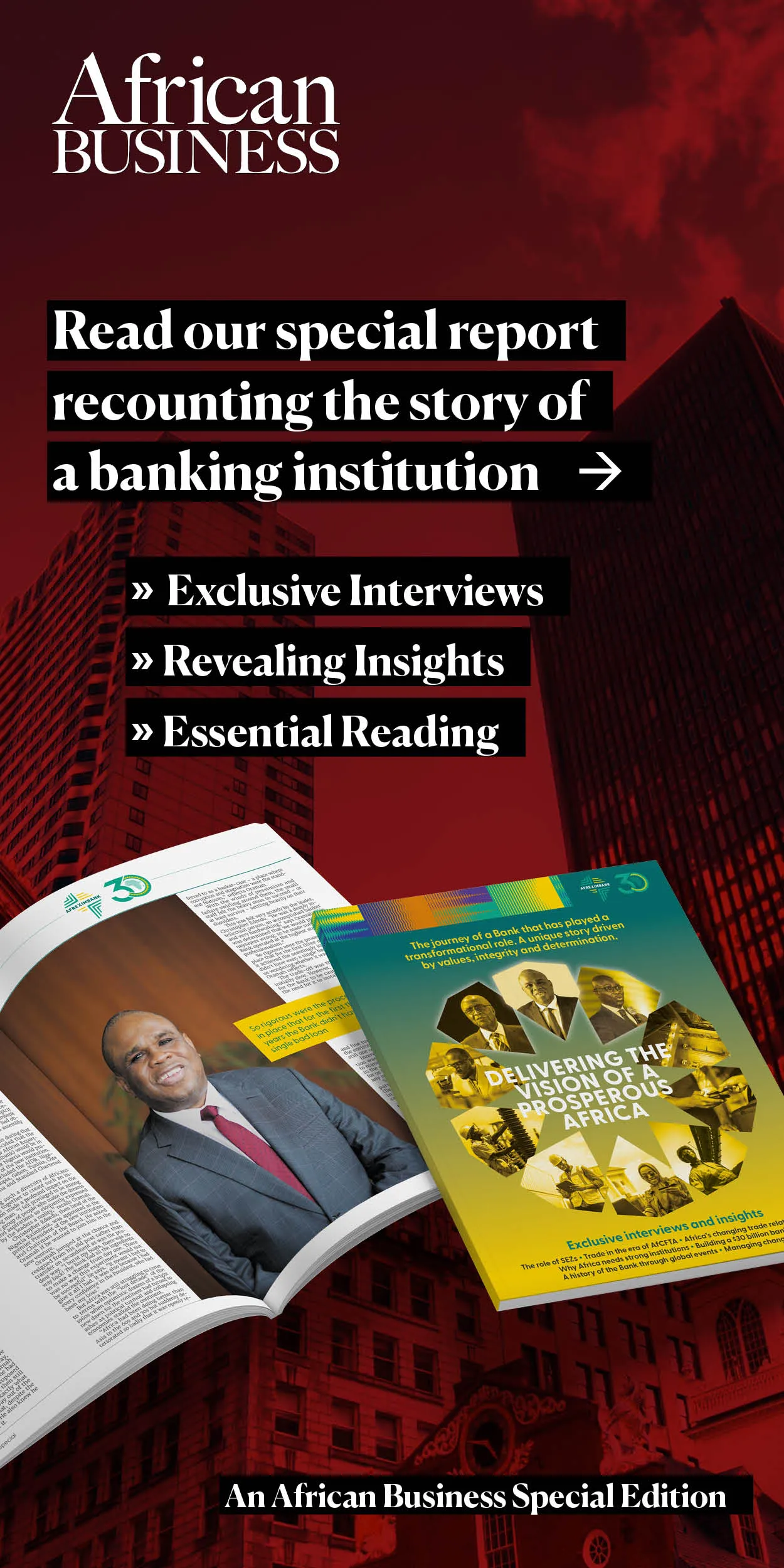This article was produced with the support of Afreximbank
When he arrived in Cairo in December 1993, he had the resolution appointing him as his only official tool – no office accommodation, no equipment, no residence, no staff and not even a letter headed paper to conduct official correspondence. This is how Christopher Edordu, who was to become the pioneer President of Afreximbank a year later, recalls early times.
He was taken on a job for which there was no template and at a challenging time in Africa’s history. Afreximbank, with a broad mandate to finance and promote intra- and extra-African trade, had been launched in October 1993 following the first general meeting of the shareholders, including African sovereigns and foreign partners, in Abuja, Nigeria.
Cairo was selected as the headquarters and Edordu was dispatched to start it off. He came with some experience within a bank offering trade credit and support in Nigeria, the Nigeriz Exim Bank, and well-armed with his own thoughts about what the pan-African institution should be.
He also had the backing of the African Development Bank, (AfDB) established 30 years earlier, and its then President, the legendary Senegalese economist Babacar Ndiaye. “We had a very positive relationship,” Edordu recalls, “and he was a source of immense encouragement.
He understood what needed to be done and provided support. He also opened doors with the governments he had been associating with. He was a great tonic and source of inspiration all through the time we partnered just prior to his retirement in 1994.
“He used to tell me that the first president is the first investment and if you miss the goal, you totally miss the road. The management and the Board were determined not to ‘miss the road’. We set up systems to facilitate operations and our operational goals were derived from the founding charter, the feasibility study, and other constitutive documents.”
Overcoming Afro-pessimism
At the time Afreximbank started its work, the continent was beset by a period of the so-called “Afro-pessimism”, which was informed by a litany of governance and economic failures. Bank failures seemed more the rule than the exception. The donor community had started to turn away from the continent. In this febrile atmosphere, to succeed and to change the narrative as it related to the Bank meant treading carefully and avoiding risk. Any early instances of failure would feed the climate of pessimism and undermine the institution’s ability to operate.
Edordu believed that its early partners watched the Bank carefully, worried about the potential for problems. This was reflected in the fact that the first Board of the Bank was only given a one-year tenure even though its charter allowed for three years. It was a time when few African financial institutions survived for more than five years. “But if you did survive this time, you had a good chance of making it. We were conscious of this and were mindful of managing risks carefully.
“Our core objective was to build a track record and a balance sheet of strength,” he recalls. “Our initial step-by-step approach yielded success and this, in turn, attracted partnerships and investment from co-operating banks.”
The charter of the new bank was comprehensive, he says, covering all the details of what the Bank was set up to do. It had been the subject of considerable debate and the mission of the institution had been broadened in the process, for example moving from providing short-term to longer-term finance.
“But this could not happen on day one – it had to happen gradually as we became more familiar with the philosophy of getting into big ticket project finance.” In addition to the institution stepping gingerly on new ground, there was initially concern about having a board of political appointees rather than experienced bankers.
Babacar Ndiaye played a prominent role in designing the Board and bringing in a mixture of skills and experience. In the end, the Board was one of the success factors of the Bank. “The presence of an informed Board provided encouragement to our partners and created more confidence in the institution.
The failure of African development financial institutions (DFIs) in the past has often been because of the weakness of the Board.” Also important was having some Regulators on the Board, who knew what the pitfalls were and could provide requisite guidance.
Indeed, the structure of the Board which reflected the Bank’s shareholding was a source of business strength and risk mitigation. There were initially three shareholder classes which later became four. It was thought that having different shareholder classes would bring strength to the Board and spread risk.
One of the classes included African governments whose motivation was the development of trade, while African commercial banks’ participation was driven by the desire for profit.
The non-African shareholders were there to provide foreign exchange funding, deepen trade and have some of their African trade finance risk mitigated on profitable terms.
Search for reliable funding sources
Typically, funding was a major problem of African DFIs. Reliance by most on government funding was a poor solution. “Experience had shown that the most serious weakness of these non-deposit taking financial institutions established to remedy market failure was the over-reliance on equity paid from government budgets,” says Edordu.
“This is usually unstable and unreliable and no real bank deserving of that name would really wish to depend on that kind of resource to fund its activities. That fact was a potential threat to Afreximbank.
“For example, when a capital call-up was made by the Bank in June 1994, it took over two years to receive the bulk of the funds even from non-government shareholders such as banks. The critical lesson was that success for the Bank meant depending on a viable treasury strategy to drive business.
“If you look across Africa, DFIs were very difficult animals to manage for this reason and there have been very few success stories – so I felt inspired to see how I could contribute to making a change, using my experience from Nigeria.”
For a bank to be properly funded, it needs access to the market for funds, not to governments, which was a very narrow funding source, particularly as there were competing agencies for such funding.
“We would not have been viable in such a situation. Also, a lot of DFIs in Africa were viewed with pessimism because of high operating and personnel costs. We had to find a way to deal with that and create an institution that was lean and agile in order to bring down our operating costs.”
The Bank also had to be careful about how it deployed credit resources to ensure that funding remained sustainable based on strong market confidence. “We tried to balance trade development and non-development finance business, even though governments were strong shareholders. In furtherance of this balance, funds had to be disbursed to meet both development and commercial priorities.”
An important feature of the African trade finance scene at the time was the dominance of international banks and the relative thinness of African institutions on the ground. As a result, trade transactions were, then and to some extent today, routed through Europe particularly the UK and France. This reality compelled the Bank to work with Western banks in credit and treasury.
Human resources (HR) quickly became a priority and decisive. “The long gestation period that ushered in the Bank meant that expectations were high soon after take-off. The compelling HR policy was to absorb existing skills from the market. We did not want to start with people who were learning on the job but with people with the capacity to hit the ground running. Also, we were lucky with our people as the AfDB stepped in with some foundation staff. So, overall, human resources were a huge factor in our success.”
Laying a solid foundation
Edordu’s two terms as President were similar being guided by the Bank’s first two Strategic Plans but quite different from each other in focus. “In the first five years, we were focussed on creating systems and establishing a culture of being a lean and agile organisation, which was the trend at the time. We also sought to be knowledge-driven and innovative. Our operational compass was focussed on four major variables – Credit, Treasury, Operational Costs and Manning.
“In the above context, the bank was very risk averse in credit and treasury at the time. We had to take things carefully because any error would have triggered an investor herd behaviour. We had to move carefully through settled syndications, risk participations, settled club deals to projects in order to build not just a strong balance sheet but also trust in our operations and sustainability.
“The main objective was to take measured steps forward to build up a track record while ensuring our survival. We needed a strong balance sheet to support a medium-term treasury strategy which involved going to the market to our partner banks in Europe and elsewhere to raise funds for growth.
In the second Strategic Plan, we were able to undertake larger initiatives and own mandates and self-driven products. By then the Bank was becoming known and we could be more robust in our action”
The low levels of intra-African trade were then, as they still are, an issue in the 1990s. “Trade on the continent was not the pattern we were most familiar with which was trade with Regions outside Africa.”
Today’s familiar trade with regions outside Africa took time to develop so would intra African trade. The current low levels of intra-regional trade may be a source of concern,” he says “but some components of that trade was fairly straight forward, such as the trade in petroleum products and could be readily developed.”
Other areas of intra-trade in Africa with growth potential were for example trade among landlocked countries, energy trade, between neighbouring countries such as Zimbabwe and Zambia or trade in other products between neighbouring countries such as Zimbabwe with South Africa.”
Lowered risk in trade deals involving African multinational companies boosted intra and extra-African trade. Growth in actual export business was worthwhile development and the Bank was able to enter into major syndications for African exports not just as a participant but as a main arranging partner involving, for example, cocoa in Ghana, copper in Zambia, various commodities in.
At the same time, the Bank continued to hone its culture of agility, knowledge and innovation.
“We wanted to be a knowledge-driven organisation that was also agile. We were also very intentional about building a culture of Afrocentricity.” This was not as easy as it might seem. There were various pessimistic definitions of what ‘Africa’ meant at the time, says Edordu.
“For some it meant sub-Saharan Africa only, for others it included North Africa. Some would remove North Africa and South Africa to create the pessimist’s image of the continent. However, this approach meant that the average indicators were negative and it did not paint a favourable picture of Africa.
“If you started stripping out the successful countries, what was left was lots of small failures. We tried to redefine Africa to literally mean Cape to Cairo, as it had been defined by Ndiaye. “Both in operation and in sentiment, we sought to drive the Optimist’s Africa and be an African institution.”
Gaining strength from adversity
“I am happy that the shares of our partners did not burn out, and that the Bank emerged as a robust institution, which was able to encourage others to partner with it,” recalls Edordu.
“It was not the usual African story of the time, but in fact the reverse, and became an example of African success. The years of turbulence did not destroy it but in fact, made it resilient. That makes me happy.”
In hindsight, Edordu says, he would have perhaps got his team to look more at the development component of the Bank’s activities. He also believes the existing model allowed too much weighting for import incomes and now feels it should have been weighted rather towards exports.
“The bulk of our funding is mainly import financing, for items we cannot make. We should gradually put more weight on export performance, allocating more capital to export activities.”
In 2023, he says, it is positive that the continent is becoming ready to co-operate in trade, but serious problems do still remain. “Africa still only has a share of between 1% and 2% of global trade that is worth about $32 trillion. The problems are structural – about 45 of our 54 countries have a negative balance of trade.
“Where you have such a situation, the opportunities are very difficult to exploit. But there are many positives as well, including the fact that there are far fewer countries engaged in conflict than they were when he headed the Bank, and fewer political problems.
“The situation on the continent has definitely improved even though there is still much to do. I am an optimist and like to keep a positive attitude.”

 Sign in with Google
Sign in with Google 
